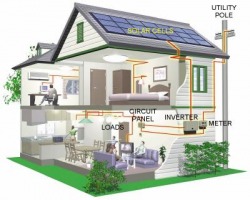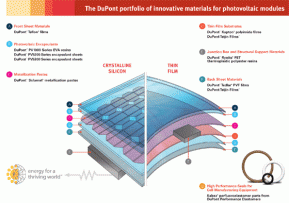Customized Estimates Available, by Appointment
(205) 454-9371
Photovoltaic Systems
For the homeowner who wants the ultimate in solar lifestyle and the benefits that come with it, a Photovoltaic (PV) system is the most advanced option available. Unlike other types of solar panels, photovoltaic collectors actually convert the energy of the sun into electricity and can power an entire house. Homeowners using photovoltaic systems will enjoy freedom from high electricity bills and the comfort of knowing that they are helping the planet and making the country more secure. Cash flow produced by an investment in a photovoltaic system for your home is as good as or better than any other traditional investment available. Photovoltaic systems qualify for a 30% Federal Tax Credit.
Solar Electricity Has Never Been More Affordable
Photovoltaic electricity production has been the fastest growing energy technology over the last decade. Its reliability and performance have never been better. Because of technological advances, more brands in the market and larger scale production of components, owning a photovoltaic system has never been more affordable.
Benefits of generating your own electricity by installing a home photovoltaic system
Environmental benefits
- It is the cleanest power generating technology available and produces no pollution
- Produces no greenhouse gas
- Generates enough electricity for the whole house with little or no utility company electric
- Adds value to home
- Provides returns on initial investment
- Qualifies for 30% Federal Tax credit
- Solar equipped homes sell 2x’s as fast as non-solar homes
The Going Solar Process
Steps to Successful Solar Implementation
- Assessment
We conduct a solar site-assessment and analysis of your home or business. We assess your site infrastructure and overall energy use. - Financial Analysis
We work with you to determine a cost-effective and efficient customized solution. - Design and Engineer
We design a system based on your energy usage, budget, and overall objectives. - Sourcing and Pricing Comparison
To insure you the most cost-effective components for the system. - Install and Monitor
We will install your system according to all local and national codes and provide a comprehensive review of operating and monitoring procedures. - Guarantee / Warranty and Service
We guarantee all parts and installation, insuring you have made a worry-free investment.
How Photovoltaic solar works
Photovoltaic solar produces electricity by using solar cells to convert sunlight into direct current (DC) electricity, Photons in the sunlight hit the solar panels and are absorbed by semiconducting materials such as silicon. Electrons are then freed from the semiconducting material creating electricity. Because of the configuration of the solar cells the electricity flows in a specific direction. An inverter installed with the PV solar system converts the direct current to alternating current (ac) that can be used for household applications.
Some of The most common photovoltaic solar systems
Grid tied system- This system is designed to operate in conjunction with your utility company and uses an inverter to distribute the electricity. When your home produces more electricity than it needs the excess electricity is fed back to the power grid essentially making your electrical meter spinning it backward.
Stand alone systems- This type of photovoltaic system is designed to stand independent of the power grid. The simplest form of a stand alone system is called a direct coupled PV system and does not utilize a battery. Since they do not have batteries for storage they can only function while there is sunlight. A typical application for a direct coupled PV system is an attic ventilation system.
Another type of stand alone system uses batteries to store energy and are used in remote locations away from the energy grid. They may also be used in conjunction with power generators or other types of clean energy generators like wind turbines.
Stand alone systems- This type of photovoltaic system is designed to stand independent of the power grid. The simplest form of a stand alone system is called a direct coupled PV system and does not utilize a battery. Since they do not have batteries for storage they can only function while there is sunlight. A typical application for a direct coupled PV system is an attic ventilation system.
Another type of stand alone system uses batteries to store energy and are used in remote locations away from the energy grid. They may also be used in conjunction with power generators or other types of clean energy generators like wind turbines.
Photovoltaic System | certified installer
Chuck Jay completed this 40-hr. course, hosted by Florida Solar Energy Center, certifying him to install photovoltaic systems of various sizes and energy outputs.


